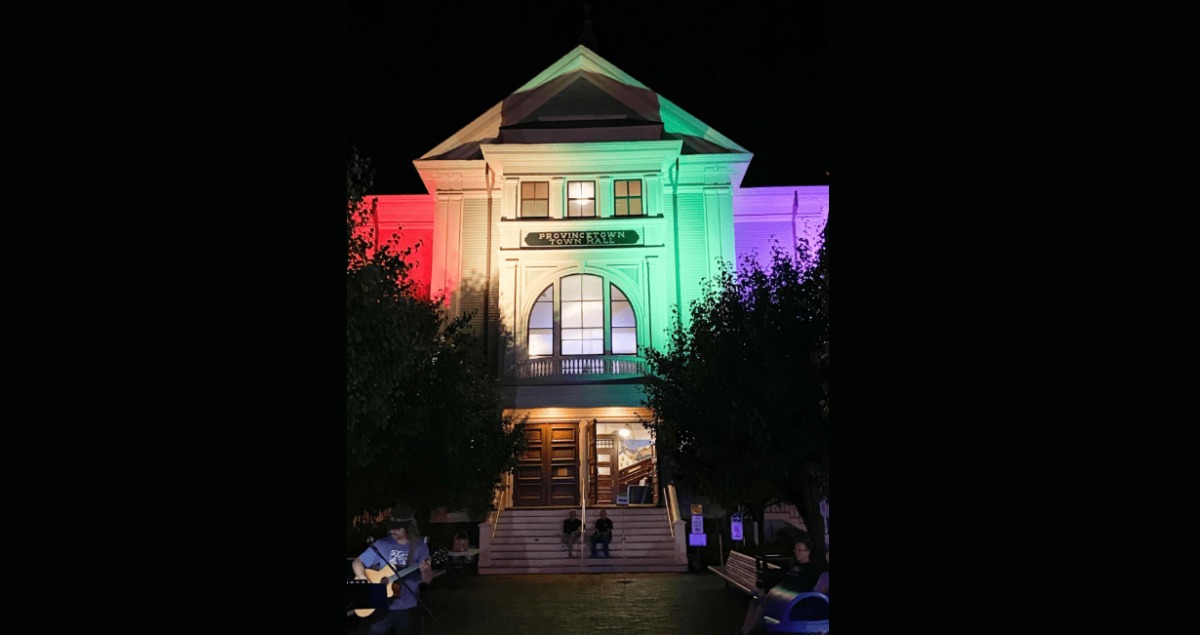Expanding the Definition of Significance — Regina Binder
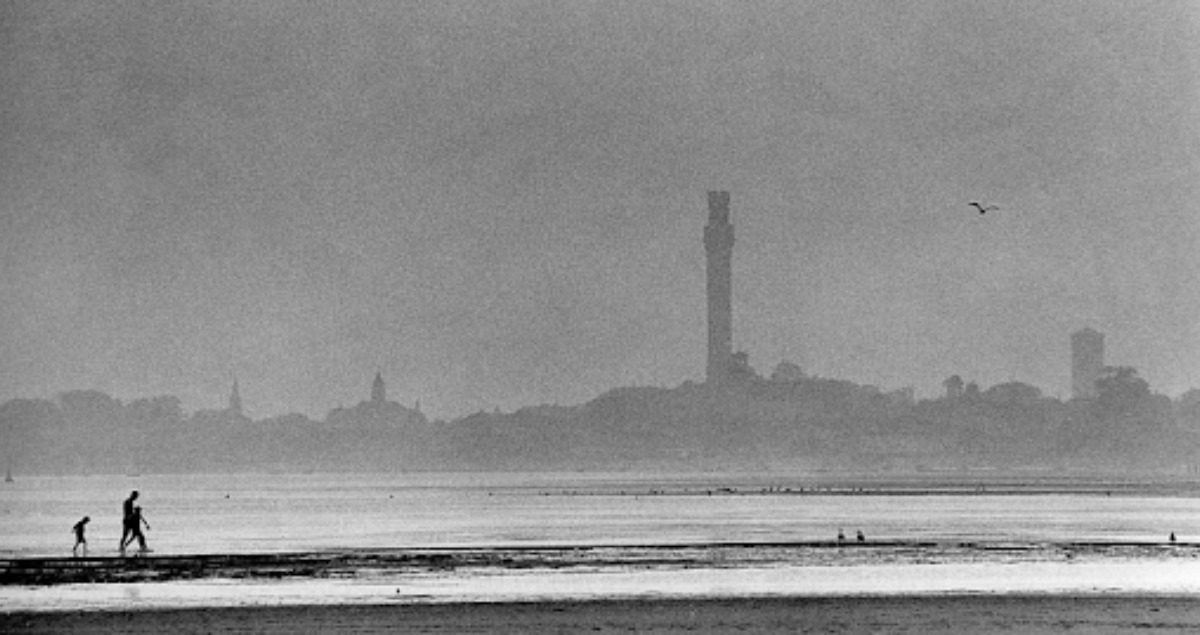
It's exciting to see how the definition of historic significance is expanding, allowing us to recognize not just architectural achievements
and well-known figures, but also the everyday stories, communities, and movements that shape our collective heritage and our collective memory.
This expanded lens helps us to embrace underrepresented histories ensuring that our understanding of place is as diverse and vibrant as the people
who lived and contributed to it.
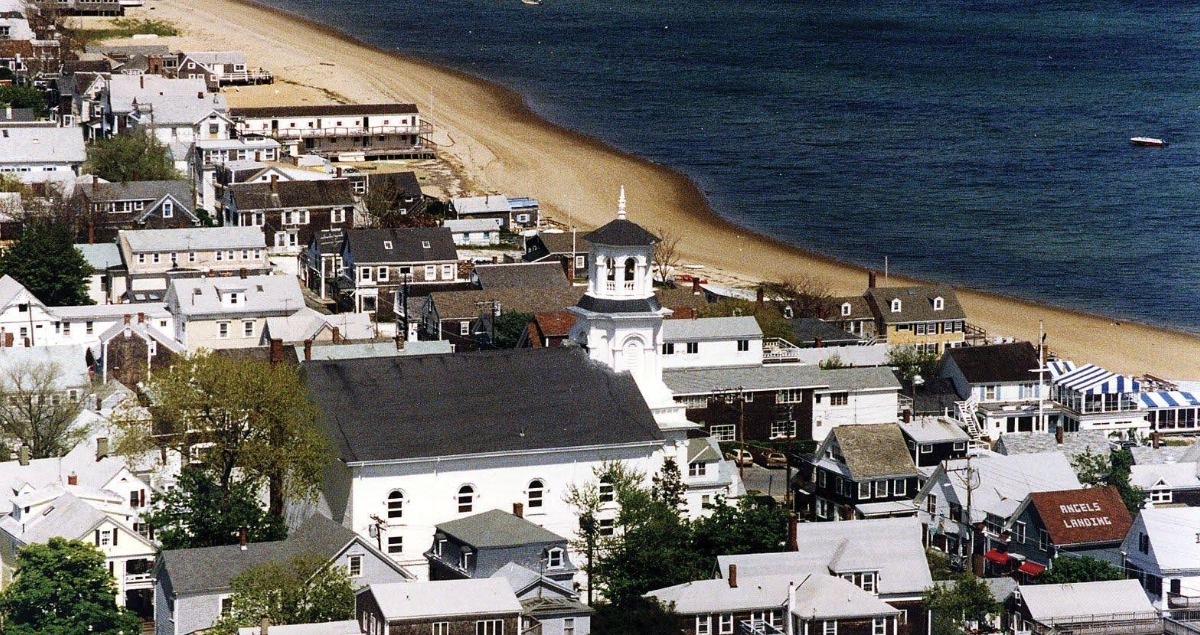
I first became interested in expanding the definition of significance when I was hired by the CCNS to take the 4X5 photos of the dune shacks slated for
demolition. I was struck by the significance of these humble structures to the community. Sadly, at the time, that type of recognition did not matter.
I decided to write my master’s thesis as a conservation and management strategy to demonstrate that keeping the shacks would not be a burden on the
Seashore. Efforts by many led to the shacks being listed on the NR due to their association with Eugene O’Neill.
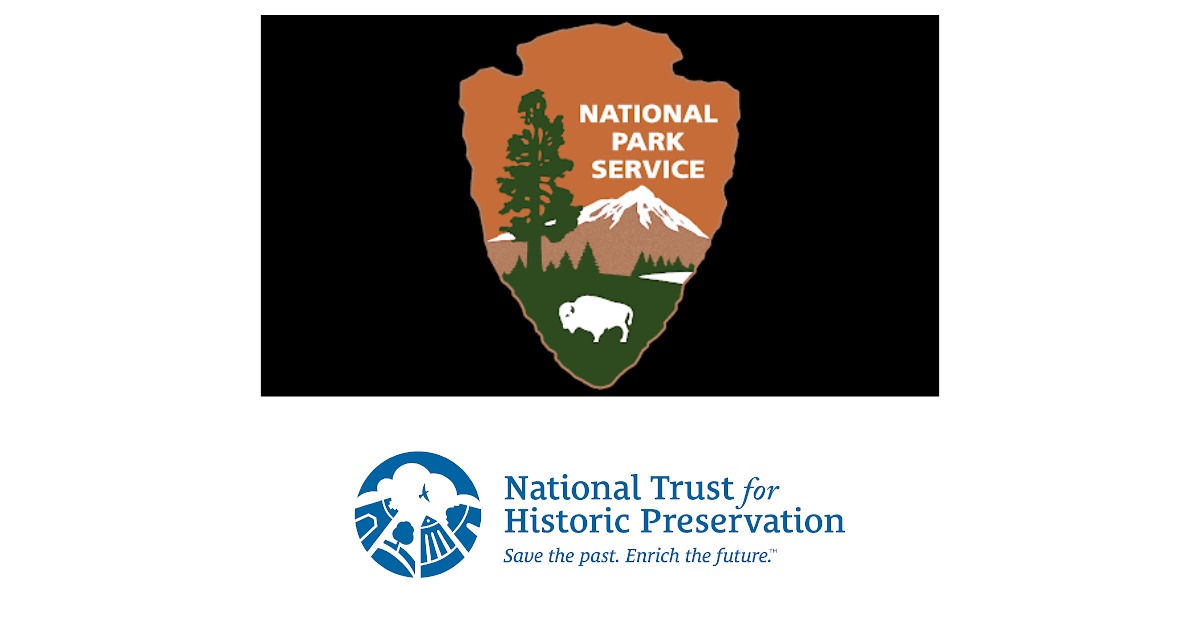
The Underrepresented Communities (URC) Grant was established by the National Park Service to address the significant gaps in the representation of diverse
communities in the National Register of Historic Places. Historically, many listings in the National Register have focused on sites related to dominant
cultural narratives, often overlooking the histories of minority groups, such as LGBTQ+, Black, Indigenous, and immigrant communities. The URC Grant aims
to help expand the recognition of these underrepresented groups by funding projects that document, nominate, and elevate their stories and contributions
within historic preservation efforts.
Importantly, in FY2023, Not for Profits were eligible to apply for the grants.
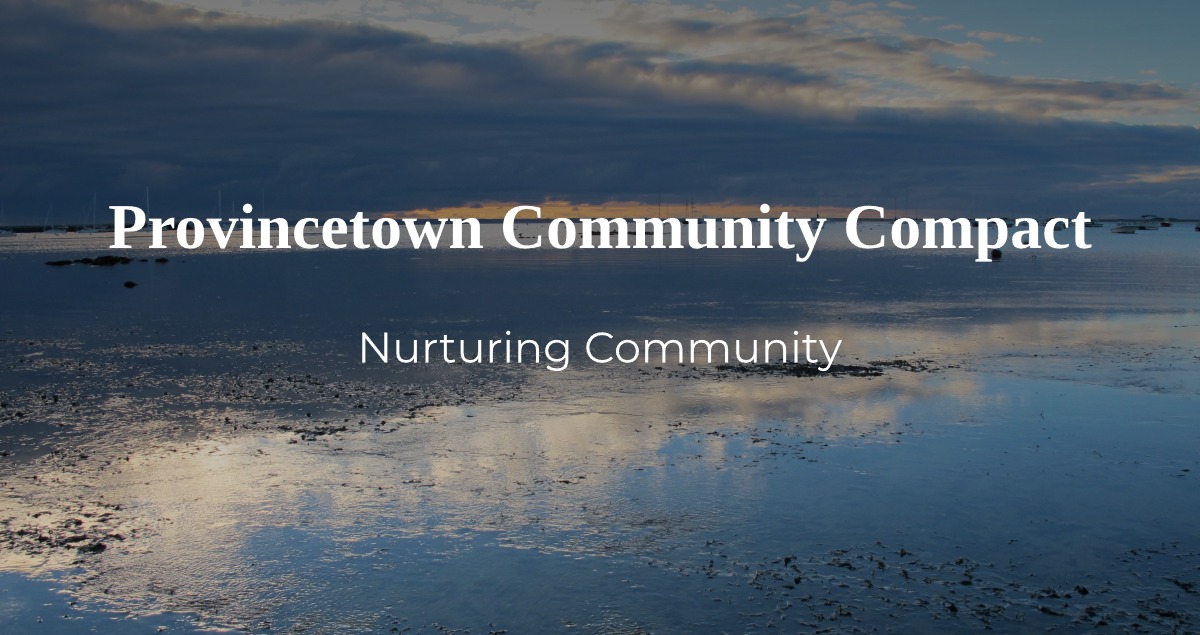
I have been working with the Compact since 1995. I’ve been the chairman of the organization for about 20 years. The Compact was the perfect entity to apply for the URC funding. The mission of The Compact is to advance the health and cultural well being of the community of Provincetown and the Lower Cape – its people, the natural environment and the economy. Our initiatives include: The Swim For Life, Dune Shack Residencies, our Think-ubator program, Prayer Ribbons and special projects and initiatives.
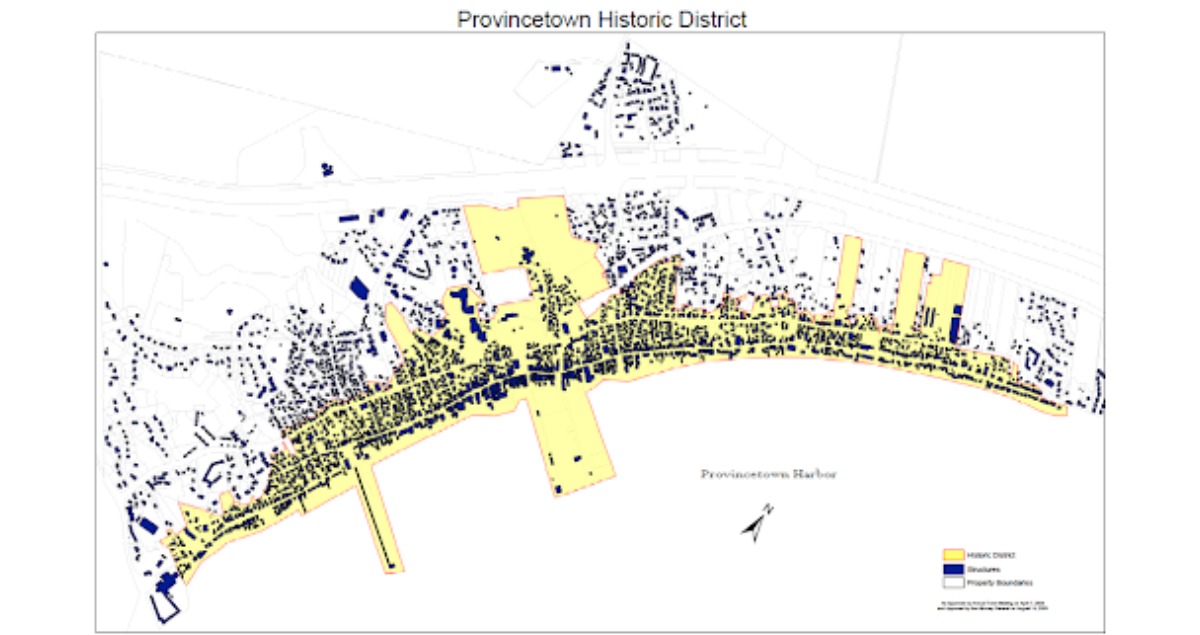
Provincetown’s NR district, now a local district, contains over 1100 contributing properties, it was listed on the NR in 1989, and is one of the largest in the Commonwealth. The only buildings individually listed are Town Hall, the UU, the library (formerly the Chrysler museum), the monument and the post office. This list reflects the narrow definition of significance that the URC grant is addressing. Our district is evolutionary in nature. Each building can be read like chapters in a book of how our town changed over time from whaling and fishing to tourism to resort. What is missing from this legibility are the stories and contributions of the diverse populations that made and continue to make Provincetown what it is. Around half of the structures are within a flood plain making documentation including that of our work on the social history even more essential as we bring these structures into FEMA compliance.
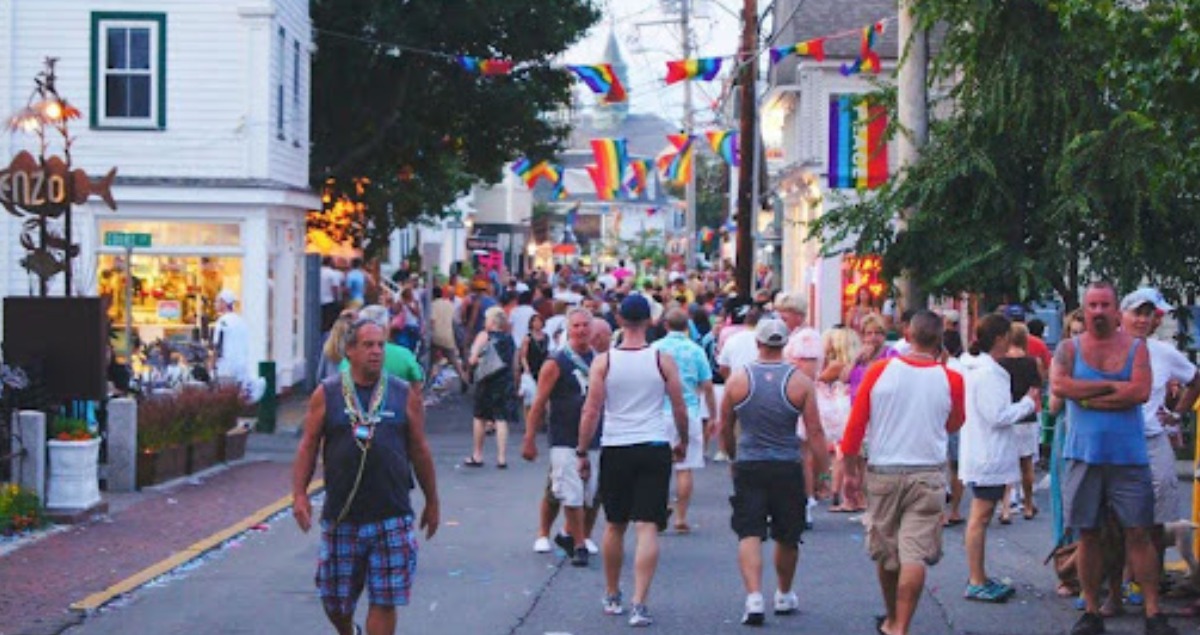
Provincetown is renowned as one of the most vibrant and enduring LGBT destinations in the country. For decades, it has been a place of refuge, creativity, and celebration for the LGBTQ+ community. While this reputation is well-known, what is less visible is how this rich social history is reflected—or often not reflected—in the town's physical fabric. Through the work we're doing thanks to the URC grant, hopefully the first of several phases, we have an opportunity to ensure that this important history is not just remembered, but also preserved and celebrated in a way that resonates with future generations.
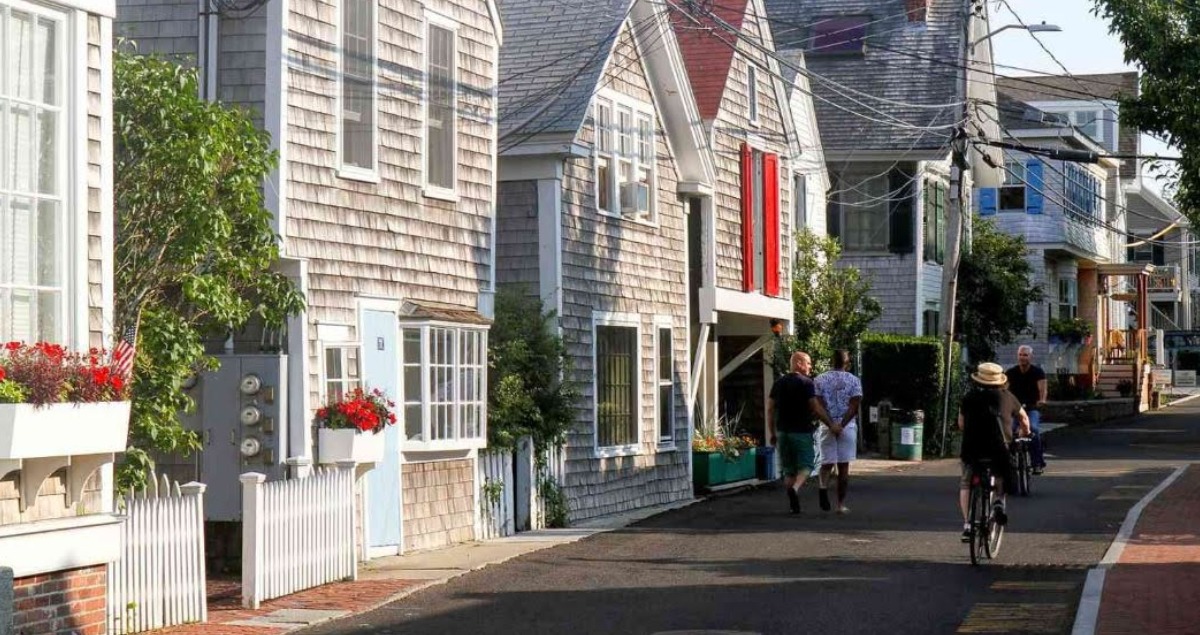
Places are not just defined by their buildings, but by the people who live in them and the stories they create. Provincetown's identity as an LGBT destination was profoundly shaped by the community that found a home here. The AIDS epidemic in particular had a deep and lasting impact on Provincetown, transforming it into both a place of mourning and resilience. The epidemic took many lives but also strengthened the community’s sense of solidarity and care, shaping Provincetown’s unique spirit. Our period of significance mirrors that of the GVHD with 1996 being the end date as it was when the Pro-T-Ace inhibitor turned AIDS from a death sentence into a chronic illness. Recognizing this history through the National Register allows us to honor both the struggles and the strength of the people who made—and continue to make—this town what it is.
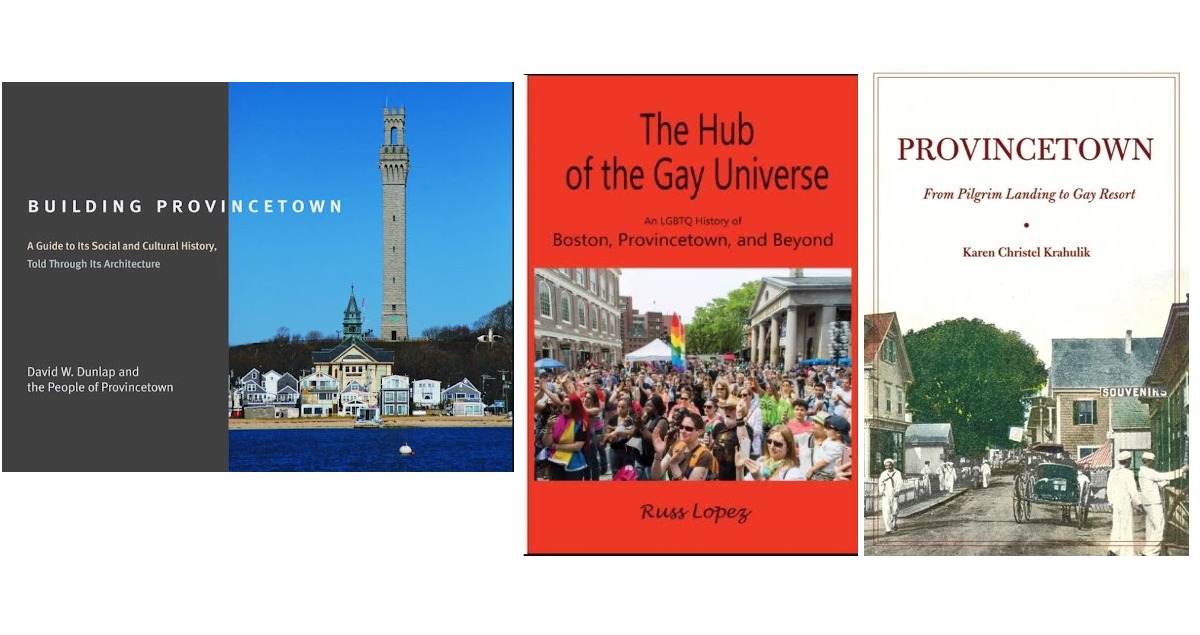
• Amending the Context Statement
• Research and Documentation
• Contextual Analysis
• Engage with Experts
• Draft the Amendment
• Gather Public Input
• Finalize the Amendment
• Submit to SHPO and NPS
• Address any revisions or feedback
Once approved, the new context statement will be officially integrated into the Provincetown NR district. This lays the foundation for future nominations
and preservation efforts centered on underrepresented histories. Our advisors and collaborators include David Dunlap, Karen Kruhulik and Russ Lopez, as
well as Ken Lustbader, Director of NYC LGBT Historic Sites Project. The Historic Sites Project is a model for our work. We have been approached by many
scholars and historians of LGBT history to assist with the project. Their guidance and support of our work is much appreciated.
The first phase of our project focuses on expanding the context statement for Provincetown’s National Register District to include the town's LGBT history,
extending the period of significance to 1996. This is essential to ensure the district reflects a more inclusive and accurate narrative. We’re rigorously
gathering primary and secondary sources—such as archives, oral histories, and expert insights—to thoroughly document this history, with required citations
to support the expanded narrative.
We are also analyzing the existing context statement to identify gaps, particularly concerning the LGBT population, and placing this history within
Provincetown's broader social, cultural, and economic development. Collaboration is key; we are working with historians, scholars, and members of the LGBT
community to review findings and ensure historical accuracy and meaningful representation.
Throughout the process, we will engage local stakeholders by holding public meetings to gather feedback, ensuring community involvement. Updating the
period of significance to 1996 is critical, as it encompasses important events in LGBT history, including the impact of the AIDS epidemic. This foundational
work will also set the stage for the next phase: drafting individual property nominations to the National Register, identifying significant places tied to
Provincetown’s LGBT history.
The final step in this phase will be submitting the updated context statement to the State Historic Preservation Office and the National Park Service
for review and addressing any necessary revisions.
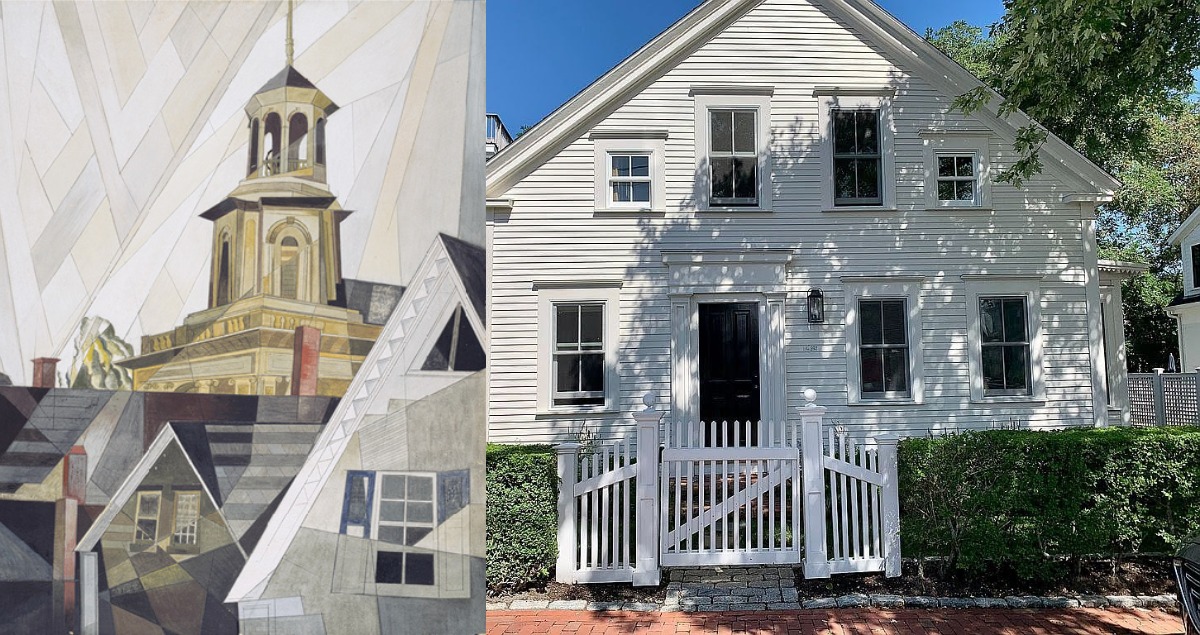
Charles Demuth and Marsden Hartley
Charles Demuth and Marsden Hartley were contemporaries and part of the same artistic circles. Both were openly gay artists during a time when
homosexuality was not widely accepted, and their work often reflected their personal struggles and identities. They were also both associated with the
early modernist movement in the United States, sharing mutual respect for each other’s artistic contributions. Their connection was more rooted in their
shared experience as gay artists navigating early 20th-century American society. They were both seasonal renters at the home of John Reed, 592 Commercial
Street.
Charles Demuth and Marsden Hartley lived at 592 Commercial Street, the home of John Reed, in the 1920s.
After Sir Christopher Wren, 1920 Charles Demuth (American, 1883–1935)
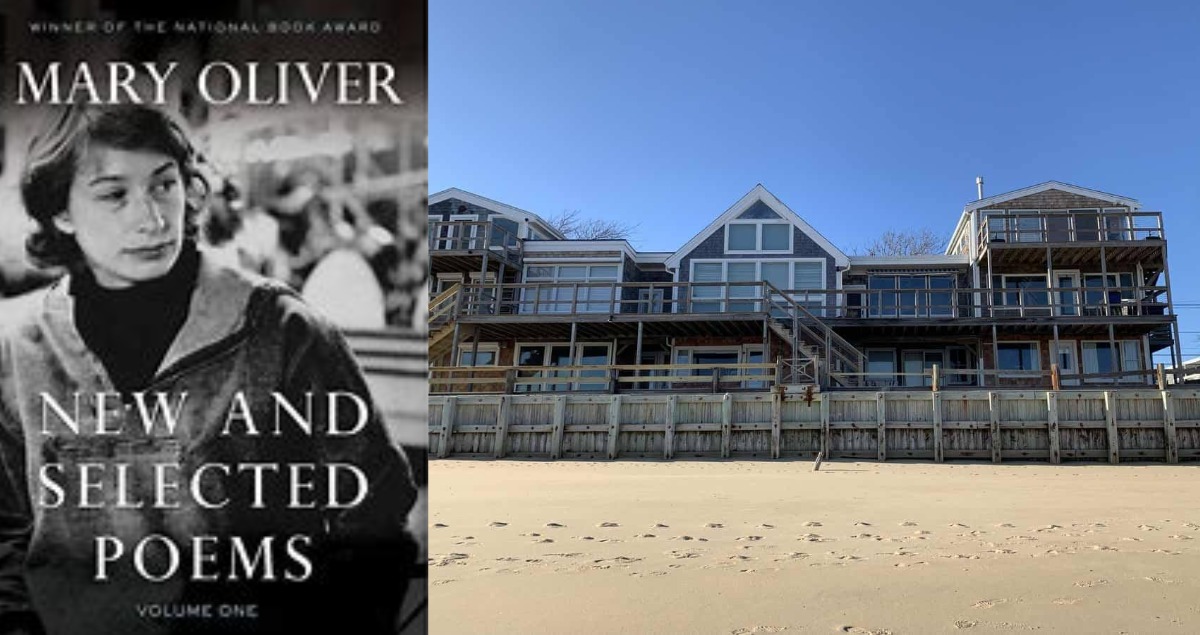
Mary Oliver
Mary Oliver, a Pulitzer Prize-winning poet, lived in Provincetown for over 40 years, where the natural beauty of Cape Cod deeply influenced her work.
Her poetry often reflected the serenity and inspiration she found in the area's landscapes, and she became an integral part of the town's artistic and
literary community. Mary was my neighbor, she lived at 535 Commercial Street. Her dog Percy frequented my house through the cat door, ate the cat food
and stole the cat toys. Mary always returned them.
Mary Oliver lived at 535 Commercial Street
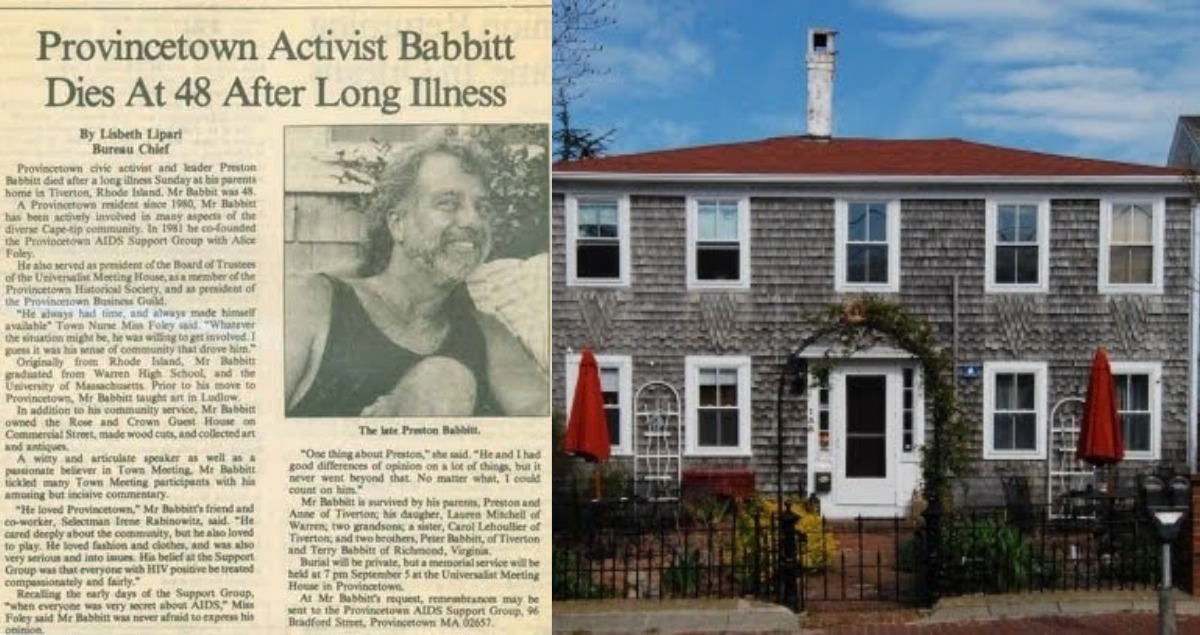
Preston Babbitt
Preston Babbitt was an influential AIDS activist in Provincetown and the owner of the Rose and Crown guest house at 158 Commercial Street. In 1981,
Preston started as a grassroots effort to care for people suffering from HIV/AIDS. In 1983 he co-founded the AIDS Support Group in Provincetown which
continues to this day as the AIDS Support Group of Cape Cod.
Preston Babbitt owned the Rose & Crown Guest House, 158 Commercial Street
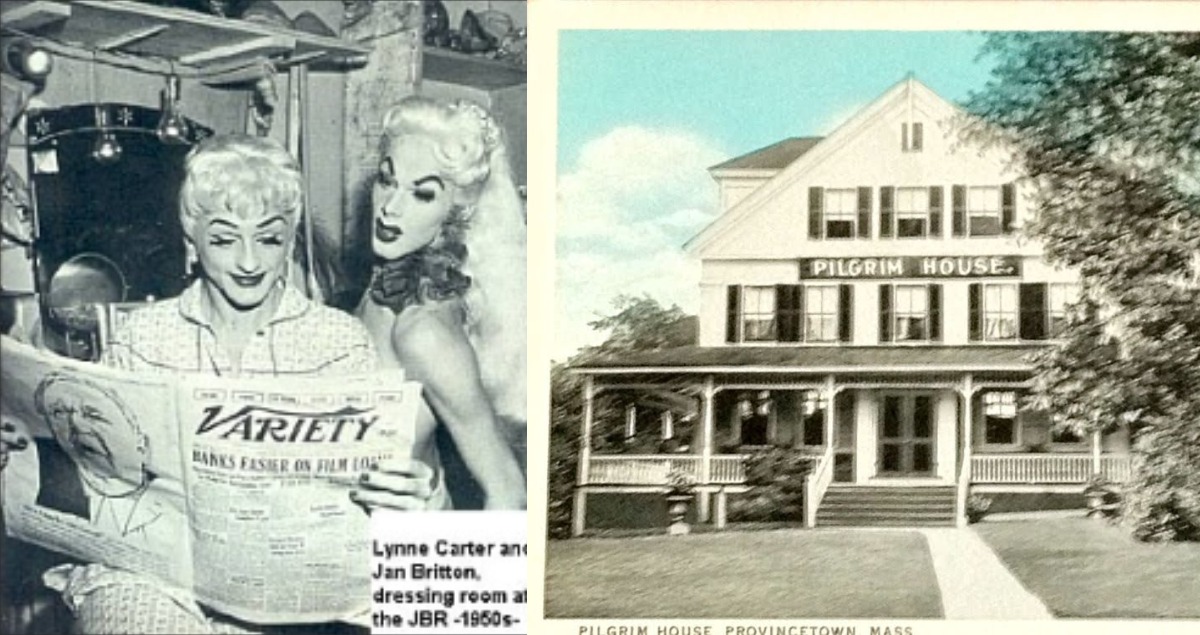
Lynne Carter
In 1966, Lynne Carter purchased the historic Pilgrim House in Provincetown, transforming it into a popular entertainment venue where he performed his
renowned female impersonations. Under his ownership, the Pilgrim House became a cultural landmark, further establishing Provincetown as a hub for LGBTQ
performers and audiences during a time when such spaces were rare.
Lynne Carter, purchased 336 Commercial Street in 1966
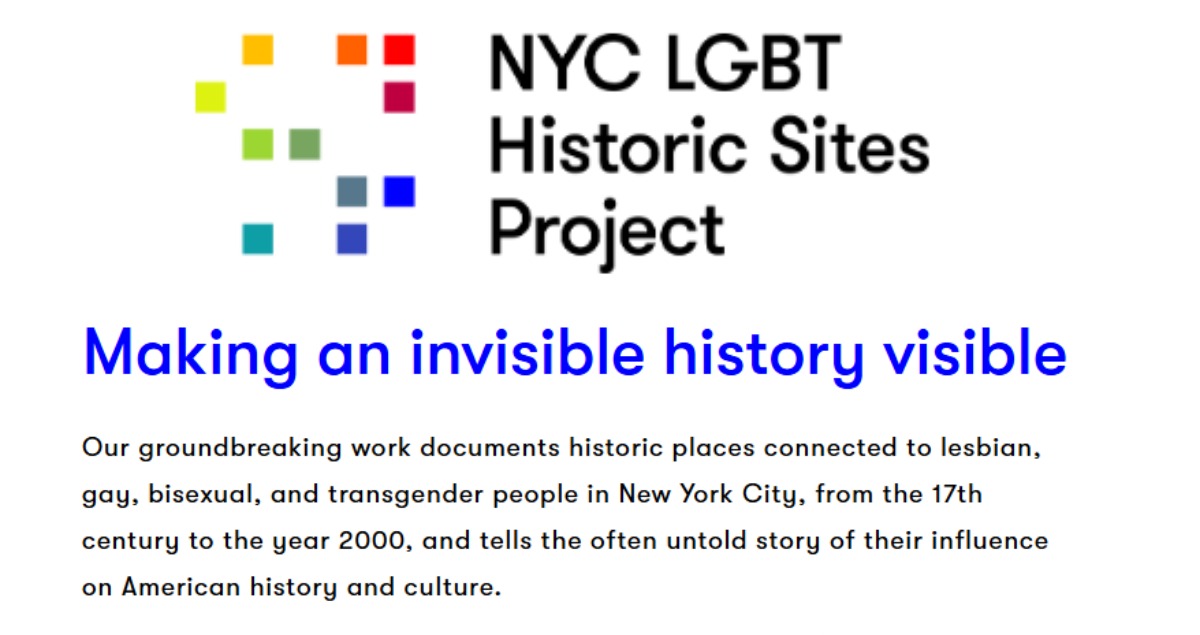
NYCLGBT.org has been a leader in documenting and preserving sites of LGBTQ+ significance in New York City. They have successfully highlighted and
elevated the importance of places that tell the stories of LGBTQ+ communities, including through interpretive elements like signage and storytelling.
Provincetown can follow this model to ensure that our own history is visible and well-documented.
What is the NYC LGBT Historic Sites Project? on Vimeo

This project goes beyond adding social history to the context statement: it's about using storytelling as a powerful tool to bring to life the rich,
diverse history of Provincetown, especially its LGBT community. Through these stories, we can connect the physical fabric of the town with the people
and events that shaped it, offering a fuller understanding of its past.
Walking tours, for instance, will highlight significant sites, allowing visitors to explore Provincetown's hidden histories at their own pace. Using
modern tools like smartphone apps, we can create interactive experiences that make history accessible and engaging for everyone, blending the past with
present-day technology.
Interpretive signage placed at key locations will also help inform visitors about the historical significance of buildings and landmarks connected to
underrepresented communities. These signs will act as touchpoints for learning and reflection throughout the town.
Additionally, we can incorporate multimedia approaches, such as podcasts or video content, to further immerse audiences in Provincetown’s social
and cultural history. These digital platforms will provide a deeper and more personal connection to the stories that make Provincetown unique.

This project is just the beginning; the journey to making Provincetown’s LGBTQ+ history visible in the built environment will require continued funding, research, and community support. We will launch a media campaign to raise awareness of our efforts, engage with local and national audiences, and secure the necessary resources to see this through. Ultimately, the stories of Provincetown will live on through interpretive efforts and preservation, ensuring future generations understand and appreciate its unique contributions to American history.
